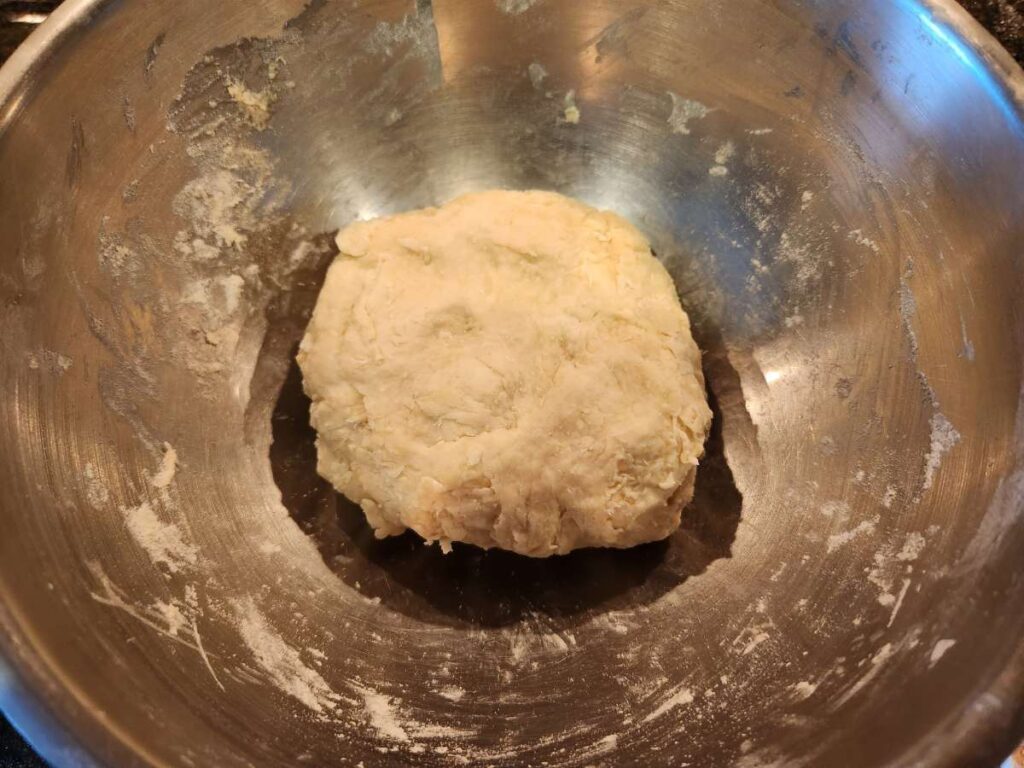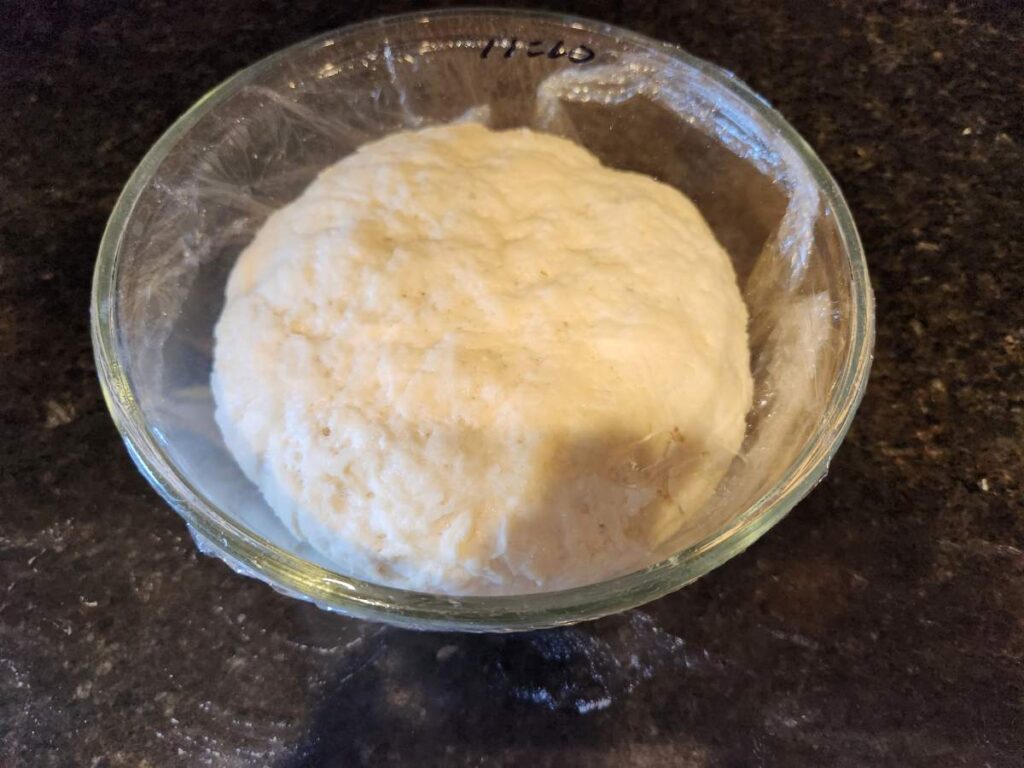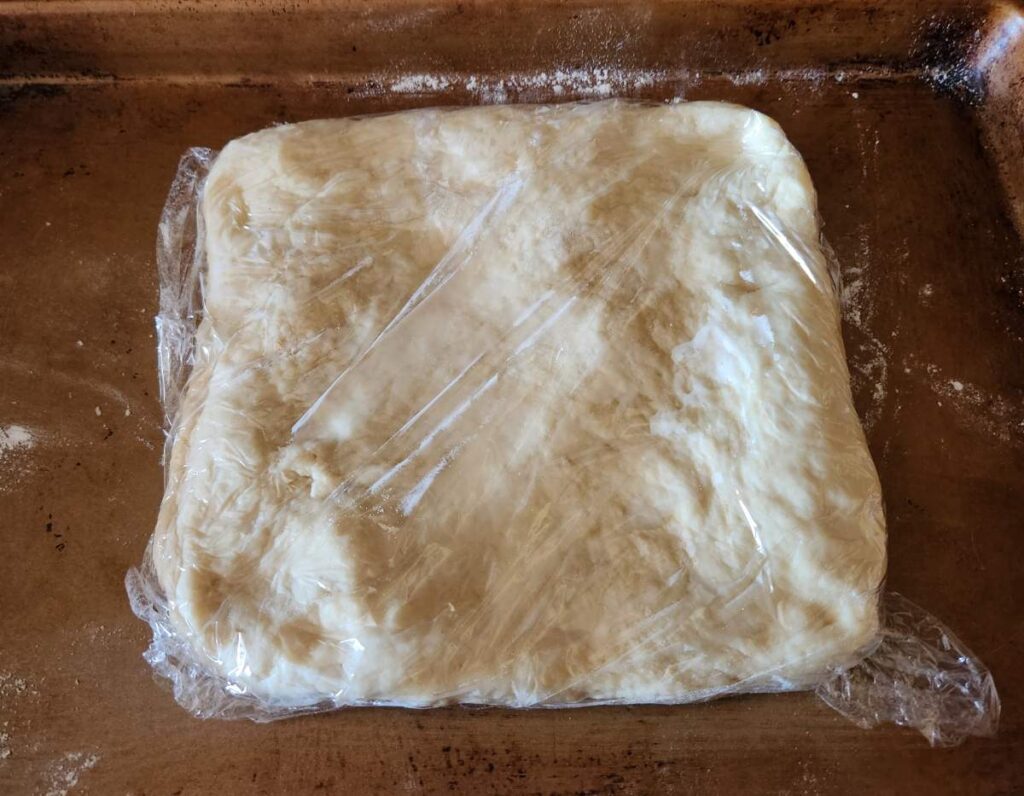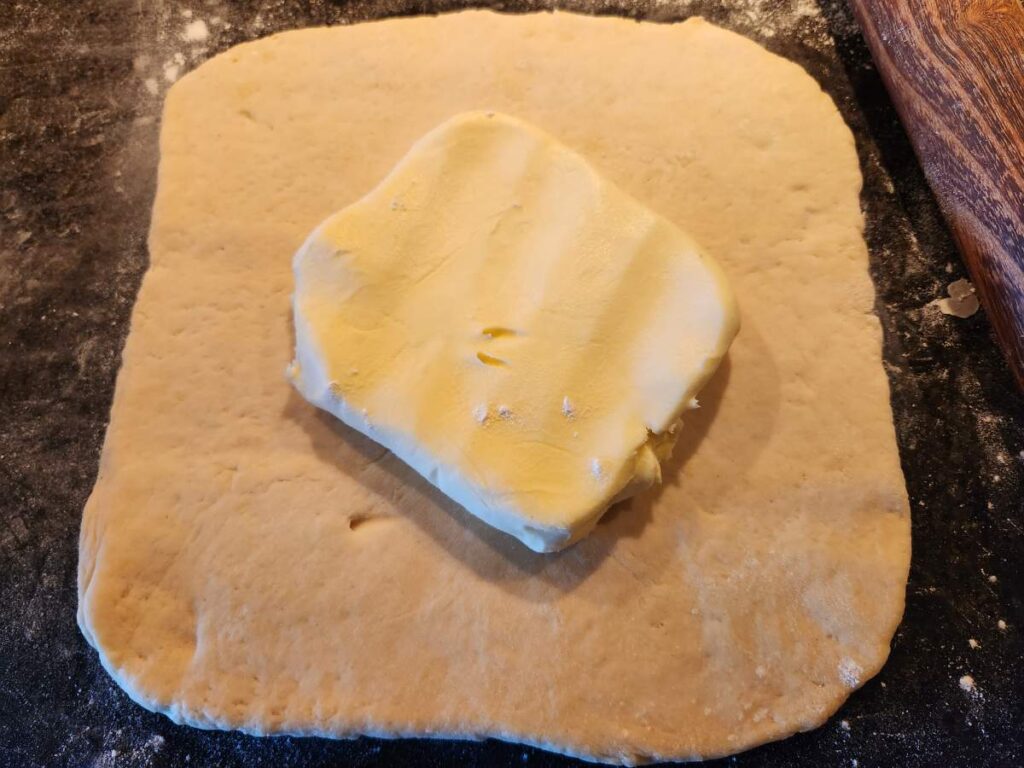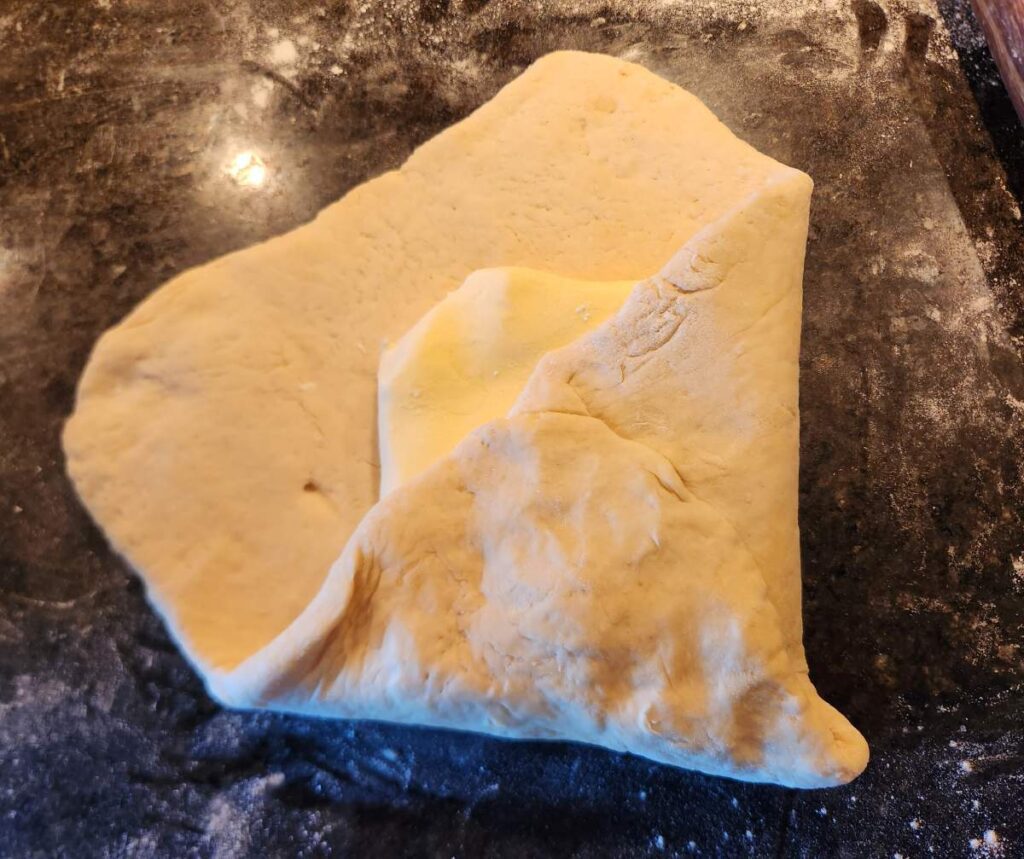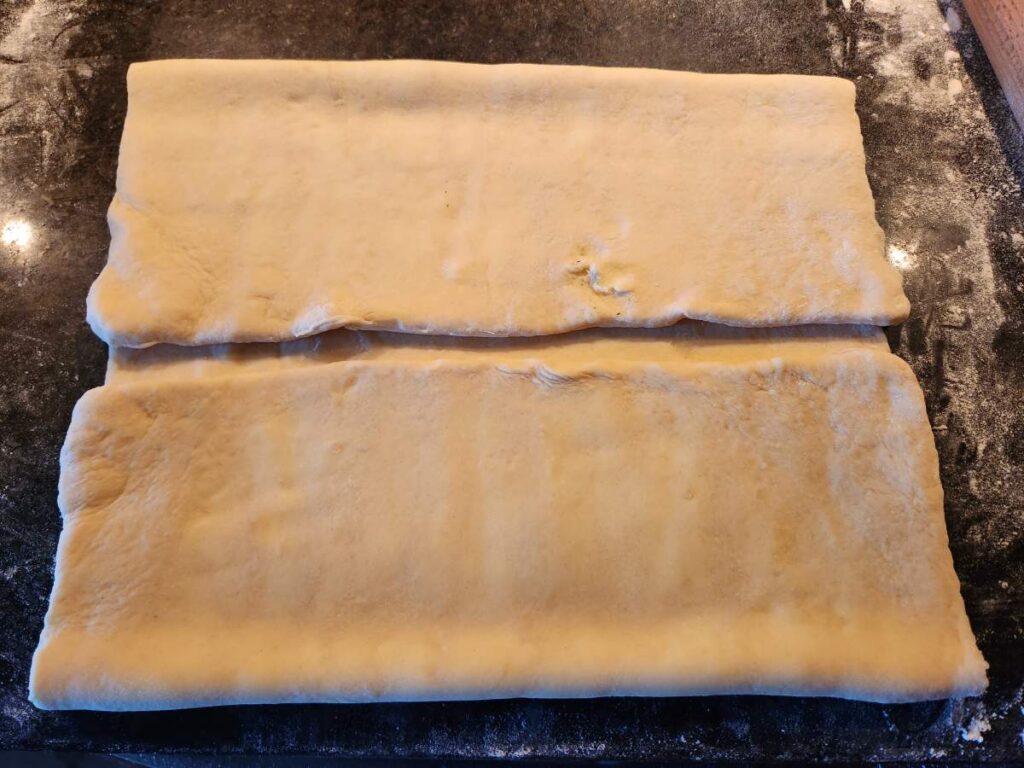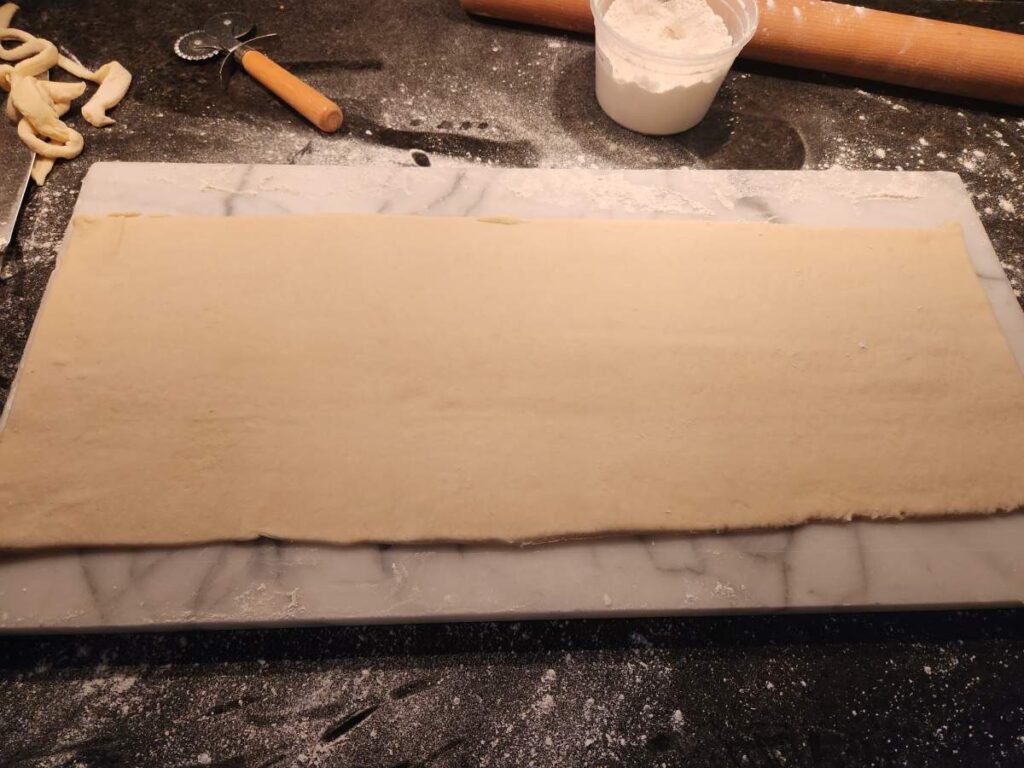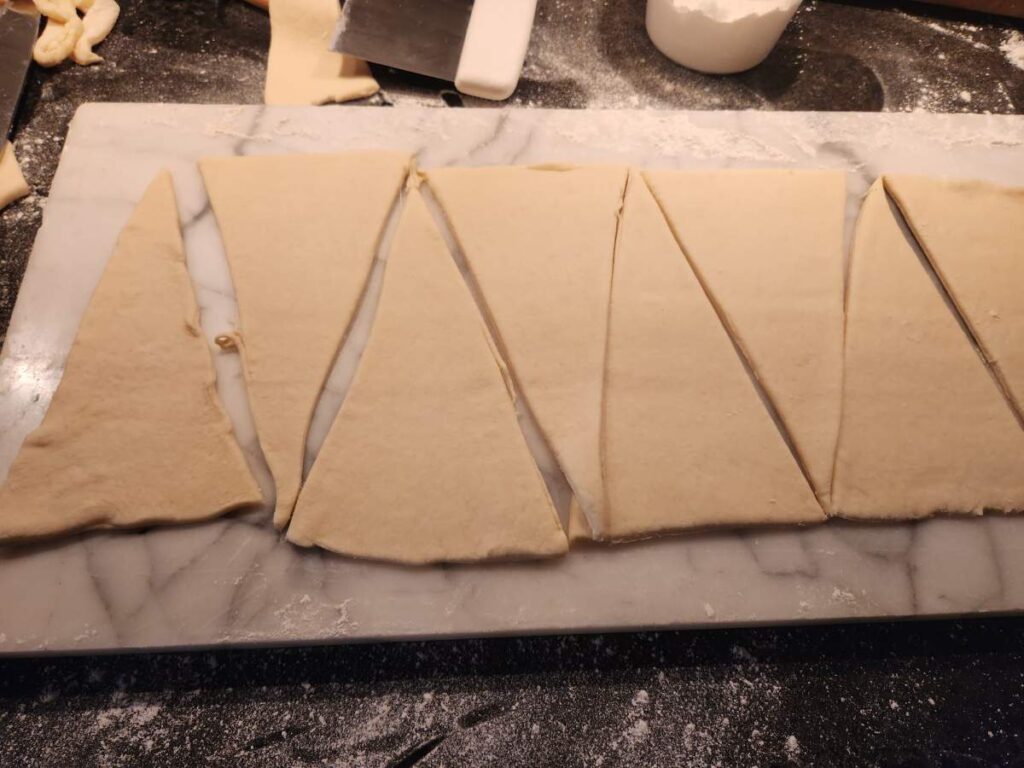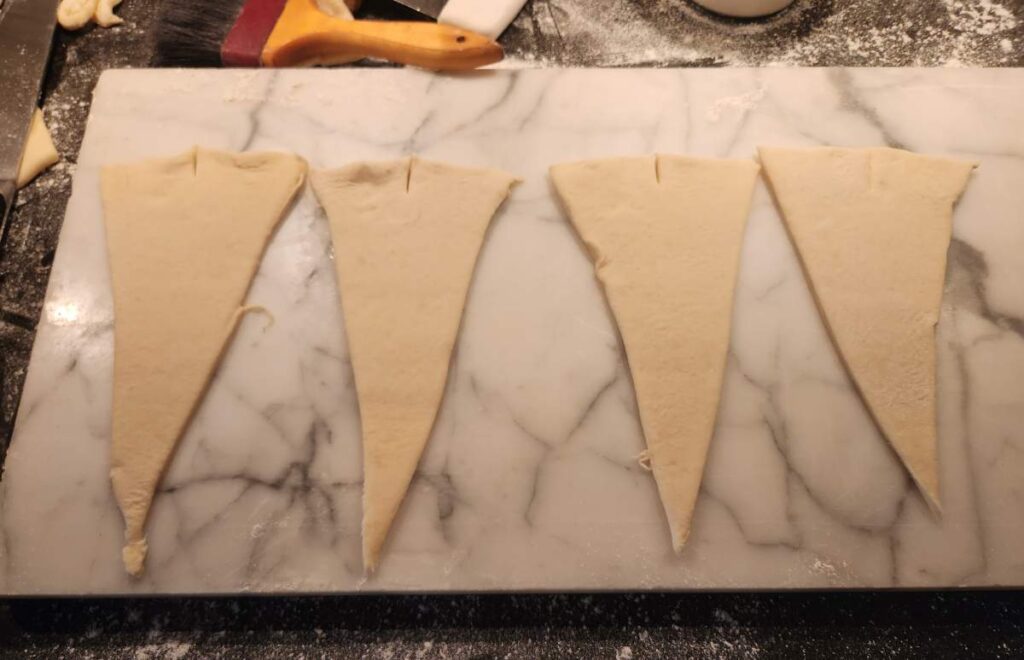Croissant
When someone would ask me to name my favorite thing to bake at my Martha’s Vineyard pastry shop Seven Layers, the answer was easy – Croissant. I absolutely loved the process of making croissant as well as the time of day they were produced.
I would arrive at the shop at around 5:30 am, open the door to get some breeze off the harbor, brew the first pot of Coffee Connection coffee, turn on the radio to classical music, and pull out the refrigerated croissant dough. I rolled out the dough by hand with a wooden French style rolling pin (which I still use) and then the cutting and rolling of the triangles would begin. After about forty minutes in a warm proof box to rise, they would be brushed with egg wash, and baked.
The quiet and peace of the morning, combined with the rhythm of forming the croissant, followed by the fragrance of the baking croissant made it a special time of the day for me.
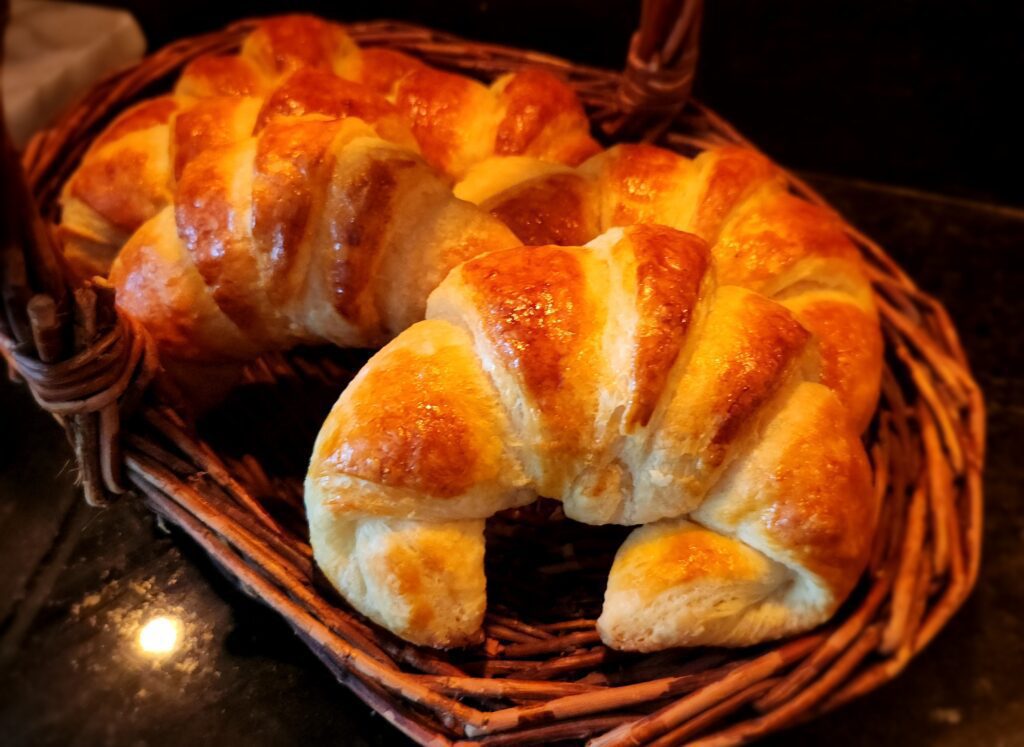
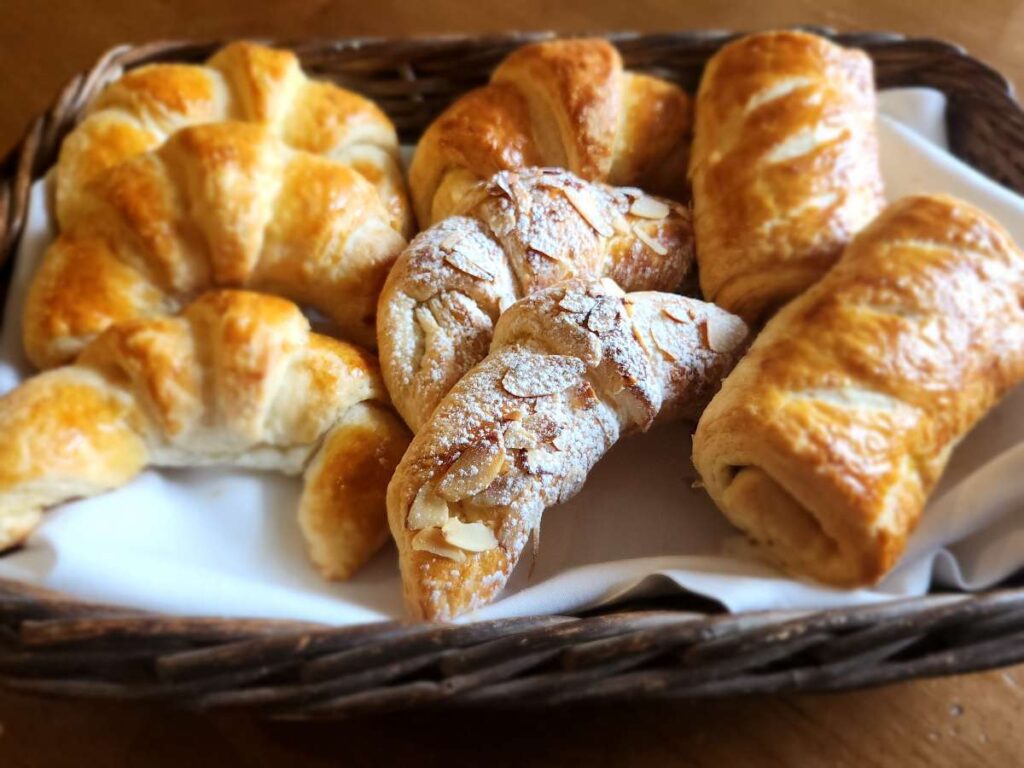
Croissant, part of the Viennoiserie family of French pastries, consists of a soft yeast dough (the D©trempe) with a block of butter (Beurrage) encased in it. The dough and butter package is then rolled out and in a series of folds and turns, many layers of dough and butter are created, leading to the croissant’s flakiness and tenderness. The rolling and folding, known as lamination, is the same process used in making Puff Pastry.
It took some several experiments, but I managed to scale down my Seven Layers croissant recipe to a small size, one that doesn’t take much room in the refrigerator or an entire counter’s worth of space to roll out the dough, and yields eight croissants.
There are two key steps in making croissant. The first is making the dough, which must be mixed just until a smooth dough is achieved, not over-kneaded. The second is combining the dough with the butter, where it is critical that the both the D©trempe and the Beurrage be at similar temperatures so they combine correctly. That’s it, the rest is just rolling and folding.
Croissant production is a joy in a cool kitchen, so try this before it warms up outside. Your croissants don’t need to look perfect to be delicious and to infuse your home with their enticing aroma.
The recipe may easily be doubled to make enough dough for other types of Viennoiserie.
Croissant Dough
| Yield: 8 croissant | # of servings: 8 |
Ingredients
D©trempe: (the dough)
2 cups + 2 tbl (10 oz / 283 g) bread or all-purpose flour
1 oz cold butter, cut into pieces
2 ¼ tsp (.25 oz / 7 g) active dry yeast
¼ cup (2 fl oz) warm water
2 tbl (1 oz / 28 g) sugar
¾ tsp (.15 oz / 4 g) salt
1 tbl milk
½ cup (4 fl oz) milk, warmed to 90 °F
Beurrage: (the butter)
¾ cup (6 oz / 170 g) high quality unsalted butter1
Egg wash:
1 egg, lightly beaten
Special equipment needed:
- 1 jelly roll pan for the dough
- Heavy duty rolling pin, preferable French style
- Two pieces of parchment paper or silpat.
- One half-sheet pan or baking sheet, lined with parchment paper or a silpat.
- Feather brush (optional)
Pre-recipe preparations:
- Warm the ½ cup of milk. Set aside
- Clear a shelf in the refrigerator
Directions
D©trempe: (the dough)
- In a medium mixing bowl, place the flour and butter. Using a pastry blender, cut the butter into the flour until is completely blended in, with no discernable pieces of butter remaining. Set aside.
- In small mixing bowl, dissolve the sugar and salt in the milk.
- Make a well in the flour. Pour in the sugar solution. Cover with flour and pour in the yeast solution. Mix lightly.
- Add just enough of the warm milk to make a soft, not sticky dough. Mix just enough until it’s a smooth dough, about 1 minutes. This dough is called the D©trempe.
- Place in a small bowl or plastic container and let rise until double in bulk.
- Turn the dough onto a flour-dusted counter and pat into a 9†by 9†square. Place the dough on a lightly floured jelly roll pan, cover with plastic film, and refrigerate for 2 hours.
Beurrage: (the butter)
- After 1 ½ hours, remove the butter from the refrigerator and let it sit at room temperature for 30 minutes.
- Place butter between pieces of parchment or silpat, and bang it with the rolling pin to make the butter malleable, but not overly soft. The butter should register around 57 °F.
Combining the dough and the butter:
- Take the dough out of the refrigerator and place on a lightly floured work surface. The dough should be around 55 °F. Form into a 4 ½ “ by 4 ½ “ square. Set aside.
- With rolling pin, roll the four corners of the dough square out, leaving a small hump of dough in the middle (see picture). Place the butter in the center of the dough, with the four corners at an angle to the dough square.
- Lift the corners of the dough up to enclose the butter. Pound the dough / butter package with the rolling pin to a 10†by 10†square.
First turn: (four-fold)
- Lightly flour the work surface and roll the dough to an 11†by 20†rectangle. If the butter should ooze out in any spot, sprinkle that spot with flour.
- Visually divide the dough along the long 20†side into quarters. Bing the top and bottom quarters toward the center where their edges will meet. Then fold the top over the bottom, as you were closing a book. This is known as a book fold, or a four-fold.
- This completes the first turn. help keep track of your turns, press your index finger into the dough once.
- Place the dough back on the jelly roll pan, cover with plastic wrap and return to the refrigerator for at least 1 ½ hours.
Second and third turns (three-folds):
- Dust your work surface lightly with flour and remove dough from refrigerator. Place the dough rectangle with the open fold side to your right. The dough will be very cold and stiff. Bang with a rolling pin to soften the dough.
- Roll the rectangle a little wider (to around 9â€) and then roll to 17†in length.
- Visualize the dough rectangle into three sections. Fold the top third down, and the bottom third up, as if you were folding a letter. This completes the second turn. Press your index finger two times int the dough, place back on the jelly roll pan, cover and refrigerate for at least 1 ½ hours.
- Repeat steps 1 and 3 in this section to complete the final turn. Press your index finger into the three times and wrap well with plastic film. As an added measure to prevent a skin from forming on the croissant dough, lay a slightly damp kitchen towel on top of the plastic wrap. Refrigerate overnight.
- Congratulate yourself. You’ve made croissant dough!
Forming and baking croissant:
- Roll out dough to a 22†by 8†rectangle. Trim all sides of the rectangle to obtain straight edges.
- Using a large kitchen knife or a pizza wheel, cut into eight triangles, each with a 4 ½â€ base. Each triangle should weigh about 2 oz.
- Line up all the triangles with the point facing you, and using a small knife or metal bench scraper, make a small cut in the base of the triangle.
- Roll the base toward you with the palms of your hands. Form the traditional crescent shape.
- Place on a parchment or silpat lined half sheet pan or baking sheet and continue with remaining croissant.
- Brush with egg wash to prevent a crust from forming.
- Let rise in a warm place until double in size.
- Preheat to the oven to 400 °F.
- Carefully brush the risen croissant with more egg wash.
- Bake until golden brown and firm, between 14 and 18 minutes.
- Remove croissant to a rack and let cool.
- Serve plain or with a good quality jam.
- Croissant may be placed in a zip lock bag and frozen. To reheat, defrost for 2 hours or overnight and place in a 350 °F oven until fragrant and crisp, about ten minutes.
Notes:
1 Plugra brand (unsalted) butter is excellent for croissant and puff pastry.
